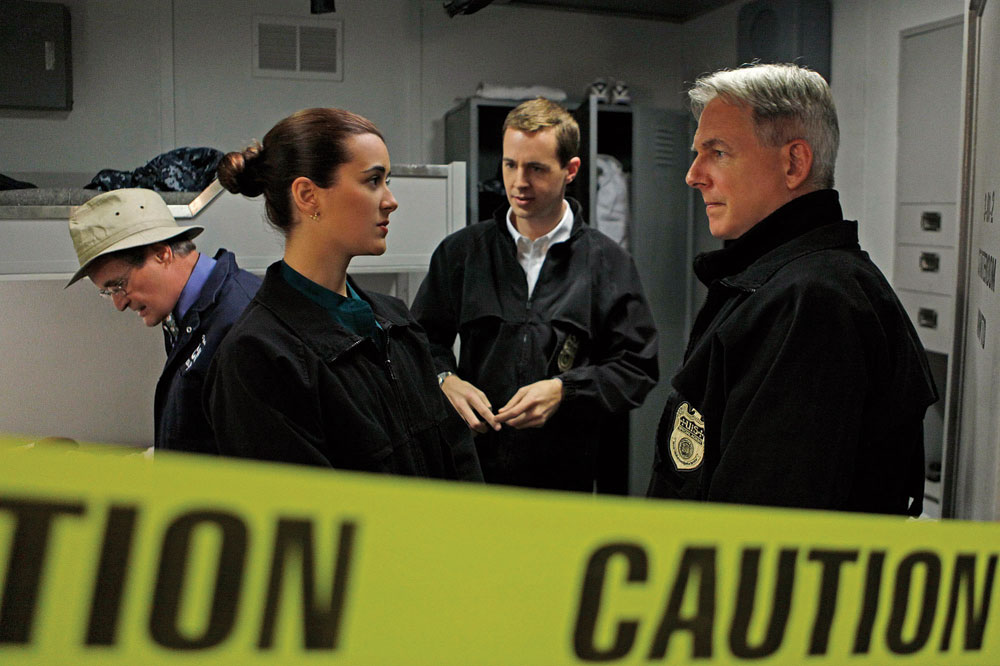Revealed: Top European drama imports
 Income for free-to-air channels in Europe is under pressure. Despite this, the European market for imported dramas remains substantial and was worth over US$5 billion last year. TBI takes a look at new research outlining the top titles, distributors and the biggest-spending broadcasters and finds the top shows taking a greater slice of the pie.
Income for free-to-air channels in Europe is under pressure. Despite this, the European market for imported dramas remains substantial and was worth over US$5 billion last year. TBI takes a look at new research outlining the top titles, distributors and the biggest-spending broadcasters and finds the top shows taking a greater slice of the pie.
There have been major declines in advertising revenues in southern and eastern Europe as the recession and subsequent austerity measures bite, with at best little growth in Northern Europe. Furthermore, governments want to reduce funding to public broadcasters. These factors have led to a 4.5% decline in 2012 in total income for Europe’s main free-to-air channels, which would seem to provide a bleak backdrop for producers and programme sellers.
However, the European market for imported dramas remains substantial – the main channels gained US$5.4 billion by screening these programmes in 2012.
The calculation was arrived at by compiling the broadcast schedules for 1,677 imported drama titles across 119 major channels in 21 territories in Europe, and calculating the average income that the channel would have received from advertising and all other income sources to support the programming.
One major take away from the data is that while the overall value generated has fallen, the amount attributed to the top tier of shows has increased.
For the producers and distributors of the big shows, times are good. The top 100 titles gained 70.3% of the total value created, or US$3.8 billion, with the top 20 largest titles generating US$2.2 billion.
 The findings are contained in new research from Essential Television Statistics, Madigan Cluff and Digital TV Research, titled The Top 100 Imported Drama Titles in Europe.
The findings are contained in new research from Essential Television Statistics, Madigan Cluff and Digital TV Research, titled The Top 100 Imported Drama Titles in Europe.
Michael Cluff, director at Madigan Cluff says: “Although the revenues delivered by imported drama in total fell significantly in 2012 compared with 2011, the revenues of the top 20 titles rose by 7.5%. With overall revenues to free-to-air channels falling, this suggests that the major dramas pulled their weight, driving advertising and other revenue to prime slots on the major channels.”
The numbers show that the proportion of revenues achieved by the top 20 titles has steadily risen from a 29.3% share in 2009 to 39.8% in 2012.
Jonathan Bailey, managing director of ETS, says: “The top 100 titles only accounted for 47.8% of the total imported drama series hours, or 75,349 of the total of 157,606 hours screened in 2012. However, the top 100 titles commanded 64.4% of the imported drama series hours screened in primetime.”
He continues: “The top 100 titles contributed 63% of the total value created which is up from a 59% share in 2008.”
The large number of episodes available for top-performing US drama titles gives programmers the opportunity to schedule across whole seasons and to run multiple episodes across day parts on some channels, sometimes using the latest season in primetime and older seasons of the same title outside prime.
CBS distributed the top three titles in 2012, with NCIS leading the pack by generating US$205 million. The three CSI franchises appear in the top ten. Only one of the top ten titles, Sturm der Liebe, originated from outside the US.
The value derived per hour of broadcast for German series Sturm der Liebe was the highest within the top ten titles, at US$134,722 per hour. However, it screened for far fewer hours than most other programmes in the top ten, appearing in far fewer territories and airing fewer hours of reruns on secondary channels. NCIS, the top show by value created, was also the leading title by hours screened.
The top five distributors accounted for 64 of the top 100 titles by value created in 2012. CBS was the clear leader, with Disney second, but some way behind.
However, the US companies are probably not as dominant as first appears. Sixth-placed Global Screen was, for example, ahead of Sony by some distance. There are two German companies – Global Screen and ZDF Enterprises – and two British companies – All3Media and ITV Studios – in the top ten. All3Media takes eighth place with only one title – Midsomer Murders.
The number of transmission hours from each major distributor can change considerably from one year to the next. CBS took the top slot for primetime imported drama series in 2012, followed by Warner Bros.
In total, imported drama contributes a little less than 20% of all primetime broadcast hours in Europe. This compares to about 15% of hours in total across all day parts.
However, this varies significantly by country. Ireland screened only 7.2% of its imported drama series hours in primetime in 2012, with Czech Republic at 9.4% and Sweden at 10% also at the low end of the scale. In contrast, the proportion was 39.3% in the Netherlands.
CBS was also the leader in the all-day category across all 1,677 titles, with Warner Bros. second again. Only 8% of Sony’s imported drama series hours were in primetime during 2012, with CBS showing the highest proportion, at 22%.
A large proportion of the imported dramas are transmitted by a relatively small pool of broadcasters. The value of imported drama series for the top 20 channels was US$2.1 billion in 2012 – or 39% of the total value of all imported drama in Europe. This proportion is almost unchanged since 2008.
These top 20 channels are less dependent on imported drama than their smaller siblings, relying on imports for about one tenth of their hours.
Eleven of the top 20 channels screened fewer than two hours a day of imported drama series in 2012. Italy was the top country by value created from imported drama series in 2012, closely followed by Germany. France was third.
The UK was a long way behind as few imported dramas are aired on the main free-to-air channels. Italy, Germany and France generated 55% of Europe’s total value in 2012.
Nearly every country has experienced a decline in total value generated by imported drama over the last five years. It is not just the hardest hit economies that have lost out, with the Netherlands, for instance, experiencing a fall of 17%, taking the total to US$148 million in 2012. The total number of imported drama series hours was 7,733 across 10 Dutch channels in 2012, down from 8,486 a year earlier and a high of 9,206 hours in 2008. With the notable exception of Net5, most Dutch channels do not screen many imported drama series, with RTL4 and SBS6 having significantly reduced their imported drama series hours in recent years.
Across Europe, five of the 119 channels surveyed screened 11 or more hours a day of imported drama series. However, all of these channels are secondary in viewing terms.
Romania’s Acasa showed 5,809 hours, or 15.9 hours a day, and was top in 2012, followed by the E4 channel in the UK with 5,563 hours, or 15.2 hours a day.
Public broadcasters screen fewer imported drama series, especially in primetime, although there are some notable exceptions. In total nearly half of the public service channels profiled air some imported drama.
Digital TV Research’s managing director Simon Murray sums up the findings. “The value created by imported drama has fallen back from its peak in 2008, partly reflecting the lower revenues in free-to-air television, but also indicating a slight reduction in the number of hours played,” he says.
“However, the market has become more focused on a smaller number of high billing titles, which are seeing increased revenues in a declining market,” Murray adds.
METHODOLOGY
Definition of value calculation
Essential Television Statistics and Madigan Cluff establish programme value by taking the combined annual net advertising, license and public subsidy revenues for each channel profiled. These annual revenue figures were then split for each channel by hour and by month following the advertising rate card and other investment patterns established for the channel or similar channels in the same market. Channels that carry no advertising or that have advertising break patterns that do not extend across all transmission hours had their value allocated by using the most comparable channel available.
Given the mixture of advertiser-funded and other funding sources, this data does not reflect specific advertising break patterns or specific spikes in ratings which may occur for individual episodes or series of programmes in individual national markets.
Definition of programme data
These analyses are based on ETS’s database, which is compiled from published schedules available in individual national markets. Programme titles have been identified and checked by ETS. The imported drama series category is defined as all live-action fiction series, including miniseries, which are produced or primarily coproduced by a foreign country. Sitcoms such as Friends are included, but animated series such as The Simpsons are not.
www.digitaltvresearch.com
www.madigancluff.com
www.etstv.com



